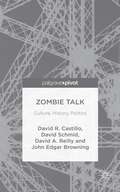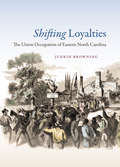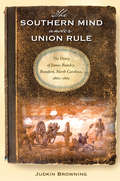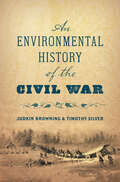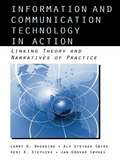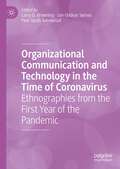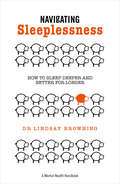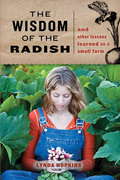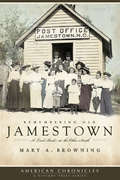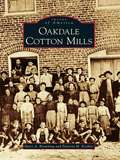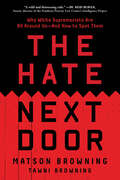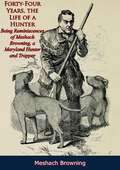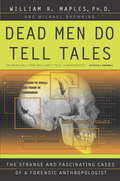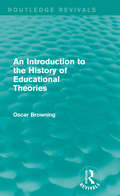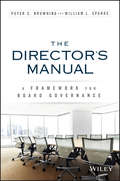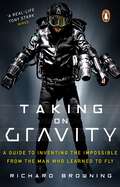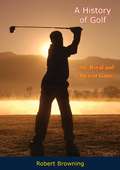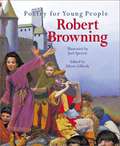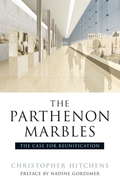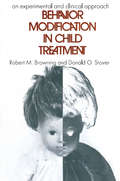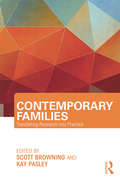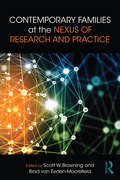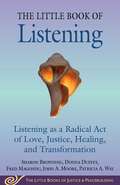- Table View
- List View
Zombie Talk: Culture, History, Politics
by John Browning David Schmid David Castillo David ReillyZombie Talk offers a concise, interdisciplinary introduction and deep analytical set of theoretical approaches to help readers understand the phenomenon of zombies in contemporary and modern culture. With essays that combine Humanities and Social Science methodologies, the authors examine the zombie through an array of cultural products from different periods and geographical locations: films ranging from White Zombie (1932) to the pioneering films of George Romero, television shows like AMC's The Walking Dead, to literary offerings such as Richard Matheson's I am Legend (1954) and Seth Grahame-Smith's Pride, Prejudice and Zombies (2009), among others.
Shifting Loyalties
by Judkin BrowningIn the spring of 1862, Union forces marched into neighboring Carteret and Craven Counties in southeastern North Carolina, marking the beginning of an occupation that would continue for the rest of the war. Focusing on a wartime community with divided allegiances, Judkin Browning offers new insights into the effects of war on southerners and the nature of civil-military relations under long-term occupation, especially coastal residents' negotiations with their occupiers and each other as they forged new social, cultural, and political identities. Unlike citizens in the core areas of the Confederacy, many white residents in eastern North Carolina had a strong streak of prewar Unionism and appeared to welcome the Union soldiers when they first arrived. By 1865, however, many of these residents would alter their allegiance, developing a strong sense of southern nationalism. African Americans in the region, on the other hand, utilized the presence of Union soldiers to empower themselves, as they gained their freedom in the face of white hostility. Browning's study ultimately tells the story of Americans trying to define their roles, with varying degrees of success and failure, in a reconfigured country.
The Southern Mind Under Union Rule: The Diary of James Rumley, Beaufort, North Carolina, 1862-1865 (New Perspectives on the History of the South)
by Judkin BrowningJames Rumley was nearly fifty years old when the Civil War reached the remote outer banks community of Beaufort, North Carolina. Comfortably employed as clerk of the Superior Court of Carteret County, he could only watch as a Union fleet commanded by General Ambrose Burnside snaked its way up the Neuse River in March 1862 and took control of the area.In response to laws enacted by occupying forces, Rumley took the Oath of Allegiance, stood aside as his beloved courthouse was used for pro-Union rallies, and watched helplessly as friends and neighbors had their property seized and taken away. In public, Rumley appeared calm and cooperative, but behind closed doors he poured all his horror, disgust, and outrage into his diary.Safely hidden from the view of military authority, he explained in rational terms how his pledge of allegiance to the invading forces was not morally binding and expressed his endless worry over seeing former slaves emancipated and empowered. This constantly surprising diary provides a rare window onto the mind of a Confederate sympathizer under the rule of what he considered to be an alien, unlawful, and "pestilent" power.
An Environmental History of the Civil War (Civil War America)
by Judkin Browning Timothy SilverThis sweeping new history recognizes that the Civil War was not just a military conflict but also a moment of profound transformation in Americans' relationship to the natural world. To be sure, environmental factors such as topography and weather powerfully shaped the outcomes of battles and campaigns, and the war could not have been fought without the horses, cattle, and other animals that were essential to both armies. But here Judkin Browning and Timothy Silver weave a far richer story, combining military and environmental history to forge a comprehensive new narrative of the war's significance and impact. As they reveal, the conflict created a new disease environment by fostering the spread of microbes among vulnerable soldiers, civilians, and animals; led to large-scale modifications of the landscape across several states; sparked new thinking about the human relationship to the natural world; and demanded a reckoning with disability and death on an ecological scale. And as the guns fell silent, the change continued; Browning and Silver show how the war influenced the future of weather forecasting, veterinary medicine, the birth of the conservation movement, and the establishment of the first national parks. In considering human efforts to find military and political advantage by reshaping the natural world, Browning and Silver show not only that the environment influenced the Civil War's outcome but also that the war was a watershed event in the history of the environment itself.
Information and Communication Technologies in Action: Linking Theories and Narratives of Practice
by Larry D. Browning Alf Steinar Saetre Keri Stephens Jan-Oddvar SornesThis book combines 20 stories from a variety of organizations with a selection of nine theories, both mainstream and emerging. The stories introduce readers to individuals talking about how they communicate today via information and communication technologies (ICTs) in business or organizational contexts. The theories, presented in accessible language, illuminate the implicit patterns in these stories. This book demonstrates how and why these technologies are used under myriad circumstances.
Organizational Communication and Technology in the Time of Coronavirus: Ethnographies from the First Year of the Pandemic
by Larry D. Browning Jan-Oddvar Sørnes Peer Jacob SvenkerudThe pandemic has created a crisis that has no equivalent in recent history, leading to a wide range of disruption across various social strata, highlighting and reinforcing inequality, and leading to profound organizational shifts. In this book, organizational communication scholars grapple with the implications of the pandemic for work and organizations, examining the immediate impact on their personal lives in an ethnographic narrative, but also theorising what the long term implications of COVID-19 will be. The book also explores the devastating impact of the virus on healthcare workers, on BIPOC entrepreneurs, and on people in developing economies. A timely, innovative work, this book will appeal to academics studying organizational communication, organizational responses to crisis, ethnographies, and alternative research methods.
Navigating Sleeplessness: How to Sleep Deeper and Better for Longer (A Mental Health Handbook)
by Lindsay BrowningWe are experiencing a sleeplessness epidemic, but we can all take steps to improve the quality of our sleep. We all sleep differently. The key to sleeping well is to develop good habits that work for you. In this book you will learn to understand your patterns and discover what works, so that you can build and maintain a healthy personal sleep plan. This book offers actionable strategies and step-by-step solutions to develop better sleep, using self-care and self-compassion. You will discover how to:•Understand the difference between 'good' and 'bad' sleep.•Cope better with temporary sleeplessness.•Begin to unlearn unhelpful sleeping habits. •Challenge your misconceptions about how well, or badly, you sleep.•Practice tailored self-care that’s likely to lead to improved sleep.
The Wisdom of the Radish: And Other Lessons Learned on a Small Farm
by Lynda BrowningWho knew that the hot career choice for recent college grads would be farming? Lynda Hopkins, a farmer's girlfriend, took her master's degree in environmental science communication and planted kale, radishes, and tomatoes on a small farm in Northern California to earn a living (sort of). What at first sounds pastoral and idyllic soon becomes a series of challenges as the realities of what it takes to run a farm come to light. From making the classic neophyte agronomist error of getting emotionally involved with her chickens to ruminating on the value of radishes, Hopkins's retelling of life on a farm in the modern age is engaging, even gripping. Through it all, Hopkins cultivates a sense of belonging, and with a lot of hard work and a little luck, she becomes quite a bit more than just a farmer's girlfriend.
Economics of the Family
by Martin Browning Pierre-André Chiappori Yoram WeissThe family is a complex decision unit in which partners with potentially different objectives make consumption, work and fertility decisions. Couples marry and divorce partly based on their ability to coordinate these activities, which in turn depends on how well they are matched. This book provides a comprehensive, modern and self-contained account of the research in the growing area of family economics. The first half of the book develops several alternative models of family decision making. Particular attention is paid to the collective model and its testable implications. The second half discusses household formation and dissolution and who marries whom. Matching models with and without frictions are analyzed and the important role of within-family transfers is explained. The implications for marriage, divorce and fertility are discussed. The book is intended for graduate students in economics and for researchers in other fields interested in the economic approach to the family.
Remembering Old Jamestown: A Look Back at the Other South
by Mary A. BrowningFounded by Quakers in the late eighteenth century, Jamestown, North Carolina, has a rich heritage that distinguishes it from many neighboring Southern communities. From General Cornwallis in the waning years of the American Revolution to the flight of Jefferson Davis from the Confederate capital at Richmond with Union forces at his heels, history has not passed Jamestown by. The town has seen gold mines and gunsmiths, a forgotten school and a cotton mill from 1865 that's still spinning. Join local historian Mary A. Browning as she relates these short tales from the town's colorful past, drawn from her column in the Greensboro News & Record.
Oakdale Cotton Mills (Images of America)
by Mary A. Browning Patricia M. KoehlerOakdale Cotton Mills, in continuous operation in rural Jamestown since 1865, began as Logan Manufacturing Company immediately after the Civil War. Its primary backer, Cyrus P. Mendenhall, was a descendant of Jamestown's early Quaker settler James Mendenhall. In the late 1880s, the mill's ownership moved to the Ragsdale family, which still owns it five generations later. Oakdale's mill village dates from the same period. Some families have lived and worked at Oakdale for multiple generations, developing a culture based on mutual trust and respect. As the mill struggles to compete with overseas products and as the number of employees dwindles, it is clear that a way of life and an industrial era are ending.
The Hate Next Door: Undercover within the New Face of White Supremacy
by Matson BrowningThe changing face of hate is on your doorstep…Matt Browning, an undercover detective in Arizona, thought he knew what hate looked like; that is, until he got a front row seat to White supremacy. What followed was a career of hardship and danger, and what he uncovered can no longer go left untold.For more than twenty-five years, Browning has been infiltrating, documenting, and disrupting white supremacy movements from the inside, gaining an intimate vantage point to the KKK, skinheads, border militias, Proud Boys, and other White Power groups, as they organized and grew, their ranks alarmingly including police force and military veterans. Together with his intrepid wife, Tawni, he adopted fake IDs and ideologies, seeking the arrest of its participants—none more so than J.T. Ready, a neo-Nazi who took "hunting trips" for border migrants while gaining mainstream acceptance as a political candidate—and terrorizing Browning's family. What others dismissed as fringe groups, Browning quickly recognized as large and interconnecting organizations permeating into every facet of American society, effectively spreading their dangerous and repugnant rhetoric at unprecedented speeds. Today, after the violent storming of the Capitol on January 6th, the threat posed by these toxic organizations can no longer be ignored by the public at large.In this imperative and gripping narrative, Browning gives readers the inside story of modern-day White supremacy in America in all of its ugly variation. Following his dramatic, high-stakes attempts to take down powerful White supremacists, the torment he faced whilst working undercover, and his eventual creation of the international Skinhead Intelligence Network, The Hate Next Door is a riveting, enlightening, and essential look at the what, where, when, and why of white supremacist groups, how to identify them, and why we must all do everything in our power to fight against them.
Forty-Four Years, the Life of a Hunter: Being Reminiscences of Meshach Browning, a Maryland Hunter and Trapper [Illustrated Edition]
by Meshach BrowningMeshach Browning spent decades as a professional hunter and trapper of bears, boars and deer in rural Maryland during the early 1800s—this is his story, in his own words. Born in modest circumstances, Browning grew up at a time when the USA as a nation was in its infancy, with much of the population living in rural areas. From his youth, the author vowed to be self-sufficient, leaving his home and first love to hone his hunting skills. Returning with money gained from selling pelts and meat, it is then that Meshach contemplates hunting as a career. The equipment the author used is much inferior to today's. Meshach's use of a musket gun—whose reliability is demonstrated as poor in several instances—leads him to rely on his skills in close quarters combat. On multiple hunts, described with stunning vividness in these pages, Browning's ability to battle animals in melee saves his life. Dangers of his trade are balanced by its lucrativeness: bear meat and pelt for instance fetched high prices.-Print ed.
Dead Men Do Tell Tales: The Strange and Fascinating Cases of a Forensic Anthropologist
by Michael Browning William R. MaplesFrom a skeleton, a skull, a mere fragment of burnt thighbone, Dr. William Maples can deduce the age, gender, and ethnicity of a murder victim, the manner in which the person was dispatched, and, ultimately, the identity of the killer. In Dead Men Do Tell Tales, Dr. Maples revisits his strangest, most interesting, and most horrific investigations, from the baffling cases of conquistador Francisco Pizarro and Vietnam MIAs to the mysterious deaths of President Zachary Taylor and the family of Czar Nicholas II.From the Trade Paperback edition.
Joe Maddy of Interlochen
by Norma Lee BrowningMusic lessons, Joe Maddy has always felt, should not be painful. They are an exciting experience at the Interlochen Arts Academy or any of the other thousands of schools around the world to which Doctor, Professor and conductor Maddy’s influence has extended during the past forty-five years.Joe Maddy of Interlochen is the lively story of one of America’s best-known, best-loved, and most colorful pioneers in music. Joe Maddy came to Interlochen, Michigan in 1928 to found the first national summer music camp. A Professor of Music at the University of Michigan, he was short on financial support, but not on enthusiasm and skill. In 1961 the music camp was reorganized as the year ‘round Interlochen Arts Academy....The activities at Interlochen now embrace art, drama, dance, and other academic subjects, but the teaching of music remains the primary purpose. His success at teaching was highlighted in August, 1962, when an Interlochen delegation of 103 musicians and 14 ballet dancers had the honor of entertaining President Kennedy and a large audience on the lawn of the White House....
An Introduction to the History of Educational Theories (Routledge Revivals)
by Oscar BrowningAn Introduction to the History of Educational Theories, first published in 1881, offers a comprehensive overview of the most notable approaches to education throughout Western history, from Athens and Rome to the Victorian public school. Exploring not only the still famous theories of Plato and Aristotle, this work also touches on techniques in education which are either no longer prevalent – Roman Oratory, the Jesuits – or in some cases were never widely adopted or appreciated: John Milton, for example. This title will be of value to those intrigued by the potential of past attitudes for present-day application, as well as to those unconvinced by contemporary approaches.
The Director's Manual: A Framework for Board Governance
by Peter C. Browning William L. SparksDirectors: Improve Board Performance The Director's Manual: A Framework for Board Governance offers current and aspiring board members essential up-to-date governance guidance that blends rigorous research-based information with the wisdom found only through practical, direct experience. The book's flexible approach to solving governance issues reflects the authors' belief that no two boards and the cultural dynamics that drive them are the same. As such, the advice offered reflects recognizable leadership dynamics and real world, relevant organizational situations. The book's two authors, Peter C. Browning, an experienced CEO and member of numerous boards and William L. Sparks, a respected organizational researcher, combine their individual experiences and talents to create a book that is both innovative and applicable to directors in any industry sector. Specific best practice guidance is designed to help board members and their directors understand the unique strengths and challenges of their own board while at the same time provide targeted information that drives needed improvements in board performance and efficiency. Specifically, this book will help board members: Explore practical advice on key issues, including selection, meeting schedules, and director succession Consider board performance from multiple perspectives, including cultural and group dynamics Discover how to effectively manage classic problems that arise when making decisions as a group Access a comprehensive set of assessment questions to test and reinforce your knowledge The Director's Manual: A Framework for Board Governance offers practical advice to guide you as you lead your organization's board.
Taking on Gravity: A Guide to Inventing the Impossible from the Man Who Learned to Fly
by Richard Browning**As seen on Top Gear**'Richard Browning is a real-life Tony Stark.' - Wired---------------For fans of Adrian Newey, Guy Martin and Chris Hadfield, in Taking on Gravity inventor Richard Browning tells the inspiring story behind his iconic jet suit, and shares his creative principles for generating true innovation.From Icarus to Iron Man, the dream of human flight has always inspired and challenged us. Now, with his pioneering jet suit, Richard Browning has redefined what is possible.Richard Browning's story is one of groundbreaking innovation. Building an aviation business from his garage, he has invented a whole new form of personal flight - a fantasy previously reserved for the pages of science fiction. His iconic jet suit has captured the imaginations of millions around the world, triggered ongoing developments in technology and engineering, and inspired a new generation of creative minds to pursue their dreams.In Taking on Gravity, Browning reveals the creative principles of his multimillion-pound company, Gravity Industries, and shows us how grass-roots innovation can disrupt established industries in exciting and unexpected ways. On this journey into the sky we'll experience what it's like to take flight, to test the limits of the human body, and to convert moonshot ideas into tangible results.The Gravity story is an inspiring example of human creativity and our ceaseless desire to push the boundaries of what is possible. Where we go next is up to you.READERS LOVE THE 'TAKING ON GRAVITY' STORY***** 'Tony Stark Lite'***** 'Must read for anyone looking for inspiration to continue pursuing their dream'***** 'Taking on Gravity by Richard Browning is equal parts inspiring, inquisitive, soulful and ultimately a fantastic read that I will return to again.'
A History of Golf: The Royal and Ancient Game (Golf Classics Ser.)
by Robert BrowningHere is a book which should prove a valuable and every welcome addition to the literature of Golf!Written in a fluent and easy style that makes reading a pleasure, this new history has the merit of literary quality, and the author’s quiet, unobtrusive sense of humour eliminates the slightest suspicion of dullness or heaviness, without in any way detracting from the seriousness of his objective or the dignity and importance that even the most rabid devotee of the Royal and Ancient would claim for it. The work also provides ample evidence of the author’s industry and research, and, in keeping with his position as editor of Golfing, conveys a quiet assurance of authority.The book deals with every aspect of the history of the game, from its earliest beginnings to the modern era of American ascendency. There are 34 chapters and a chronological table covering 600 years from 1353 to the 1950’s. We select here, more or less at random, a few of the subjects dealt with: Seven successive monarchs of the Stuart line as players—The golf of the House of Windsor—Golf as a cross-country game—The Celtic hurley, and the Belgian chole—The Scots game and the Dutch—The origin of golfing terms—Golf before the formation of clubs—Competitions came before clubs—The beginning of the championships—The start of the university match—How golf came to London—The golf boom of the gay nineties—The beginning of golf in America—The evolution of the professionals—Women’s golf originally a part of the feminist movement—Clubs and balls; wooden balls; the old featheries; the coming of the ‘gutties’; the arrival of the rubber core—Course construction—The rise of the golf architects—The evolution of the rules—American thoroughness makes golf a science instead of an art—International golf; the Walker, Ryder, and Curtis Cups—The game as a preserver of ancient landmarks—The genius of golf, the only game in which the worst player gets the best of it.
Poetry for Young People
by Robert BrowningRobert Browning's poetry has mysteries and a beauty of language that youngsters will love exploring, from the classic and beloved Pied Piper of Hamelin to the charming verse play Pippa Passes. Perfect for parents to read aloud or along with their children, and accompanied by striking artwork, here is a selection of some of Browning's most reader-friendly works. Several paintings compellingly capture Pied Piper's drama: the Piper, smiling as he offers his services; the rats fleeing the town in droves; and the entranced children who will soon be lost forever. Home Thoughts from Abroad ("Oh, to be in England, Now that April's there. . . ") features illustrations of the countryside in full bloom. There are 25 excerpts in all, fully annotated to enrich young readers' understanding of these poems. Dr. Eileen Gillooly earned her Ph. D. from Columbia University, where she is Director of the Core Curriculum and teaches nineteenth-century literature and culture. She has also edited another entry in the Poetry for Young People series on Rudyard Kipling. Joel Spector's work appears regularly in books, in newspapers such as the New York Times, in magazines such as Business Week, Good Housekeeping, and Newsweek, and throughout Europe and in Japan. He lives in Connecticut.
The Parthenon Marbles: The Case for Reunification
by Robert Browning Nadine Gordimer Christopher Hitchens Charalamabos BourasThe most powerful case yet made for the return of the Parthenon MarblesThe Parthenon Marbles (formerly known as the Elgin Marbles), designed and executed by Pheidias to adorn the Parthenon, are perhaps the greatest of all classical sculptures. In 1801, Lord Elgin, then ambassador to the Turkish government, had chunks of the frieze sawn off and shipped to England, where they were subsequently seized by Parliament and sold to the British Museum to help pay off his debts.This scandal, exacerbated by the inept handling of the sculptures by their self-appointed guardians, remains unresolved to this day. In his fierce, eloquent account of a shameful piece of British imperial history, Christopher Hitchens makes the moral, artistic, legal and political case for re-unifying the Parthenon frieze in Athens.The opening of the New Acropolis Museum emphatically trumps the British Museum's long-standing (if always questionable) objection that there is nowhere in Athens to house the Parthenon Marbles. With contributions by Nadine Gordimer and Professor Charalambos Bouras, The Parthenon Marbles will surely end all arguments about where these great treasures belong, and help bring a two-centuries-old disgrace to a just conclusion.From the Trade Paperback edition.
Behavior Modification in Child Treatment: An Experimental and Clinical Approach
by Robert M. BrowningThis book is the first attempt to validate behavior modification techniques in a carefully controlled experimental treatment environment for emotionally disturbed children. Such special settings permit carefully conducted research experiments can be carried out. This is the first book to synthesize scientific and clinical approaches to human behavior, indicating that behavior modification may one day be as much an applied science as engineering or medicine.This experimental approach introduces scientific rigor to the clinical setting, as evidenced by precise measurement of behavior variables, detailed specification of treatment procedures, and the use of sophisticated experimental designs to provide objective evaluation of the effectiveness of treatment programs. In this approach, series of idiographic (single-subject) case studies are conducted in a precise manner with each patient-subject admitted to the treatment program. The general research methodology is similar to that used in the broad area of operant conditioning, and most work reported in the book was conducted within a learning theory or behavior-modification framework.Browning and Stover discuss the general problems of developing and controlling a total therapeutic milieu, presenting practical discussions of problems of data collection, decisions about treatment programs to be used, staffing problems, and documental opinion on the relative values of various treatment techniques. Throughout attention is devoted to developing a method for answering common questions of parent, child-care worker, and professional. The authors conducted symposia on the material contained in this book at various national and regional meetings and have lectured extensively on college campuses. It is a ground-breaking study.
Contemporary Families: Translating Research Into Practice (Routledge Series on Family Therapy and Counseling)
by Scott Browning Kay PasleyWritten for researchers, practitioners, and students in advanced courses, this book furthers our understanding of the complexity of contemporary families. Seven types of families are the focus of this book, based on the research available and the challenges they present for mental health professionals. The family forms discussed are• Adoption• Foster care• Interracial families• Family members with special needs (with a focus on autism)• Families with LGBTQ members• Grandparent-headed Families• Family members with chronic medical conditions The volume establishes an innovative format that fits the new age of evidence-based practice. Each chapter is written by a collaborative team of authors consisting of researchers and practitioners. The former address the prevalence and characteristics of the family form and then present the research findings most relevant to clinical practice; the latter use this as the foundation for their portion of the chapter, in which they discuss strategies for good therapeutic intervention, representing a true integration of science and practice. Readers learn about relevant research findings regarding each family described, as well as gain explicit instruction and case material for which to augment therapeutic efforts with these populations.
Contemporary Families at the Nexus of Research and Practice
by Scott W. Browning Brad van Eeden-MoorefieldContemporary Families at the Nexus of Research and Practice integrates current research with clinical theory to establish the most up-to-date, evidence-supported treatment options for unique contemporary families. Each chapter begins with a case study and genogram. A research section that explains family experiences outlined in the case study follows. Finally, a treatment section presents clinical theory and provides an evidence-supported practice. Together, each chapter demonstrates how theory gets translated into practice. Family forms discussed include families of divorce, stepfamilies, families of addiction, impoverished families, families of incarceration, families of cyberbullying, and families of murder victims. Whether you’re a professional or a student, this book will provide both relevant research findings and explicit instruction and case material to augment your practice.
Little Book of Listening: Listening as a Radical Act of Love, Justice, Healing, and Transformation (Justice and Peacebuilding)
by Sharon Browning Donna Duffey Fred Magondu John A. Moore Patricia A. WayA practical guide to listening well in restorative justice programs and any relationship.The Little Book of Listening is an introduction to and practical guide for listening as an emergent strategy for creating a transformed world. It presents radical listening as an essential macro-skill, one that is essential in forming &“right relationships&” with ourselves and others that are the necessary prerequisite to all lasting forms of social change. This is a collaborative book, constructed from the contributions of twenty-six listeners from a wide variety of backgrounds who have shared their strategies, experiences, inspiration, and hopes for a transformed world through listening justly and equitably. One of the primary goals of the book is to offer practical tools for readers to develop the skills to listen to themselves and others more effectively, drawing attention to the barriers and filters that so often distract us from listening. Another goal is to inspire readers through the personal stories of how just listening has impacted the authors and invite readers to adopt these approaches themselves. Finally, we aim for this text to be a resource for practitioners in the fields of justicebuilding and peacebuilding. Conversations are how humans explore new ideas and reach new understandings: paradigms shift and the world is changed by our communication with each other. Whatever processes are used, it is imperative that facilitators and participants listen deeply, humbly, and attentively, without ego or agenda, to themselves and to one another.
